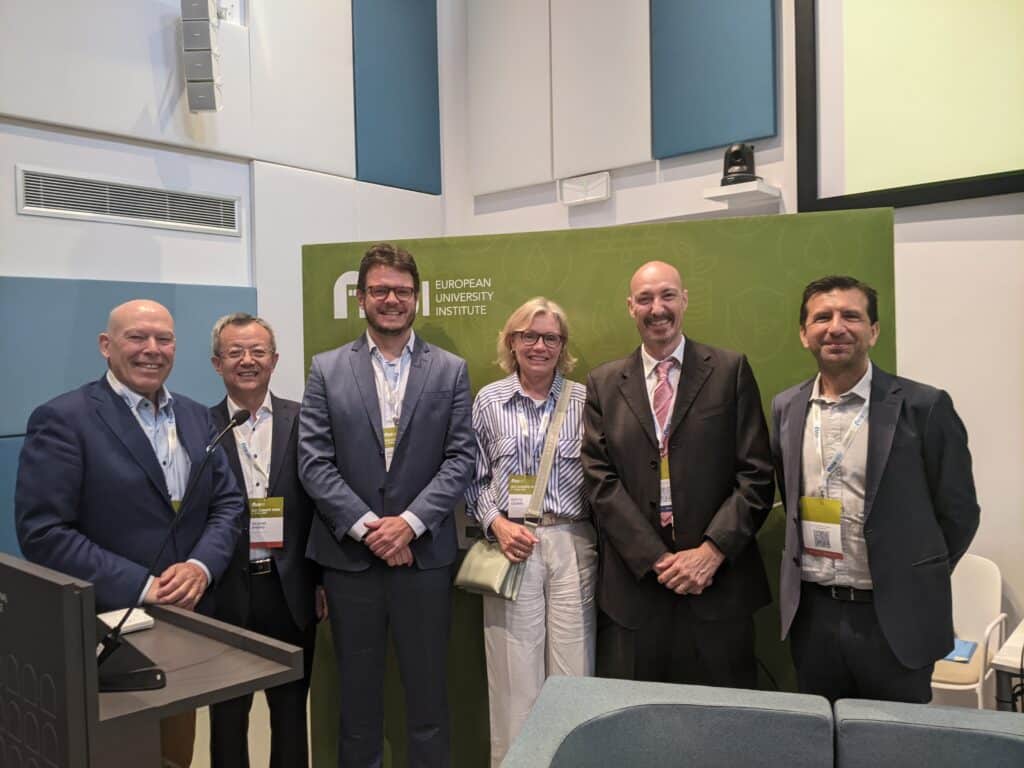Public perceptions of justice and wealth redistribution in the energy transition: A Twitter analysis
In this article, based on her Master’s dissertation research at the University of Siena, Research Associate Mira Manini Tiwari (RSC | EUI) and the University of Siena) analyses Twitter users' perceptions of the Just Transition.
A couple of years ago, while I was helping a primary school child with her homework, I had a confirmation of something I had feared for a while: that what young generations are learning about climate change mitigation remains largely identical to what it was 20 years ago: switch off the lights, unplug the TV. The UN report on education for sustainability affirms this: in curricula worldwide, issues of biodiversity and community rights remain by the wayside, and education into the skills young people need to be members of a critical, transformative community are all but absent. Our education has not evolved to respond to our discovery of Big Oil’s decades-long campaign, following Big Tobacco’s blueprint, to discredit climate science and reinforce the burden of responsibility on individuals, absolving powerful actors like themselves of their centrality.
How does a population collectively mobilise to challenge the systemic issue of non-renewable energy? Furthermore, what happens to the individuals and communities around the world who bear the greatest climate change effects but cannot afford to ‘transition’ out of it?
The European Commission announced the Green Deal’s Just Transition Mechanism (JTM) in 2020, claiming to hold industrial actors accountable for their emissions by expanding the sectors covered by the Emissions Trading System (ETS) and to provide financial support, through investment and wealth redistribution, to regions and households otherwise left behind by changing job landscapes and energy costs. A policy of this scale and centrality seemed to respond to collective action and social justice questions. Still, these depend on the policy’s public acceptability, which in this case concerned a pivotal climate issue: how populations perceive responsibility, fairness, and justice in climate change mitigation.
These perceptions are continually being (re)formed, largely through informal learning, such as engagement with social media. In this lens, learning takes place through participation in a social context where validity and expertise are co-constructed, and learning is, therefore, non-linear, with shifting foundations of knowledge not always in our control (Greenhow and Lewin, 2015). While social media data have important limitations (including, but not limited to, the restricted amount of data accessible, the size and demographics of users, and language availability) aside from offering real-time data on new policies for which surveys have not yet been conducted, social media data captures the co-construction of knowledge and opinions as information is created, absorbed, and responded to. Even the presence of bots and algorithms is relevant, indicating what what users are exposed to and engaging with.
Scope of the research
The research worked with a final dataset of 17,940 English-language tweets to investigate how Twitter users perceive the Just Transition Fund (funding regions), the Social Climate Fund (SCF, funding households) and the new European Emissions Trading System (ETS2), which brought building heating and road transport emissions (deeply embedded both in household costs and in regional industries, e.g., the car manufacturing sector) and in part funds the SCF. I analysed the full dataset using WordStat, and subsequently conducted an in-depth manual coding of a more focused dataset of tweets on the redistributive elements (the JTM, SCF, and ETS), looking at the purpose of the tweet, the relationships expressed, and the value judgements on the mechanisms.
Main findings: actors, keywords, and concepts
The results revealed a discourse dominated by tweets from Belgium, and moreover specifically by official European actors, institutional actors such as academics and think tanks, occasionally politicians in countries where national strategic plans were being developed, and actors in journalism or the news. Unsurprisingly, across the keywords, topics, and hashtags in the full dataset, there was a consistent prominence of the EU Commission, EU programmes and policies, accompanied by focuses on energy and funding, with the latter, too, grounded in the institutional context.
The emergence of ‘equitable systems’ as a key topic echoed its centrality in the focused study of tweets about redistributive policies, creating an encouraging thread of ‘equity’ through the dataset. Equity took on a broad scope in the tweets, spanning environment, people, institutions, energy, and regulations.
Climate Action and Climate Change were the most common topics after Vehicles for unverified users, suggesting that the EU Green Deal conversation on Twitter is being broadly situated in its wider scientific issue. However, the absence of keywords and topics referencing specific challenges, events, or impacts of climate change potentially implies an overall detachment between the two.
The most salient relationships in the redistribution dataset concern Duty, Equity, and Praise. However, these were not accompanied by significant levels of specific references to vulnerable communities, polluter responsibility, or particular patterns of burden or distribution.
Gain was the most frequently coded outcome, followed by System Change, suggesting an overall constructive approach to the topics discussed. What began as studying the SCF as a policy alone became studying two policies, given the visibly different responses to it and the ETS. The ETS responses were divided between, on the one hand, criticising the costs to citizens, citizens paying for EU debt, and supporting polluting industries, and, on the other hand, ambition, investment, and social compensation.
The Social Climate Fund was mostly positively viewed, though much of this response was from European institutions. The critiques of the SCF included insufficiency and procedural difficulties. However, unlike the procedural challenges found in Maestre-Andrés et al.’s (2021) review, these concerned institutional actors, not publics directly. A significant proportion of critiques of the Just Transition in general, particularly regarding renewable resources and efficacy, alongside advocacy for the Just Transition’s projects, commitments, and ambition.
It seems that the two sides of the JTM responses (efficacy versus commitments and ambition) are strictly tied to the ‘system change’ code. This brings us back to the underlying motivation for my research: to begin to understand citizens’ mobilisation for system change, not merely “band aids”, and more specifically, for system change that is just and equitable for the environment and humans.
While the tweets reflected the aims and promises of the JTM, SCF, and ETS, those that critiqued the EU Green Deal and its embeddedness in a persistent structure of production, innovation, and consumption, and the possibilities of a ‘third way’ are not to be ignored (Ossewaarde and Ossewaarde-Lowtoo, 2020).
Conclusion
Analysing how the energy transition appears to citizens is important for studying how to improve the understanding and acceptability of climate mitigation policies, and particularly those that consider distributional inequalities and impacts. The research findings highlight, however, a relatively static or isolated understanding of the concepts and dynamics linked to the energy transition and (in part due to the limitations of using English-language tweets) a predominantly institutional engagement with the issue.
Furthermore, if we are to embark on a more dynamic understanding and transition, we must recognise that “leaving no one behind” – the motto accompanying the EU Green Deal – implies an assumption of the way “forward,”. In this sense, the tweets focusing on ‘system change’ (though currently a small minority) suggest that policy might be one step ‘behind’ a call for a deeper rethinking of society. If that’s the case, this is an important message to policymakers to ensure that public support for the energy transition be grounded in a deeper, common understanding both of the interrelated mechanisms of the energy transition and of the transformations in social and environmental justice we seek to achieve through our policies, including futures that we may not yet have considered.
Mira Manini Tiwari
Research Associate in Knowledge, Governance, and Transformations at the Robert Schuman Centre and Research Fellow in Environmental Economics at the University of Siena.






